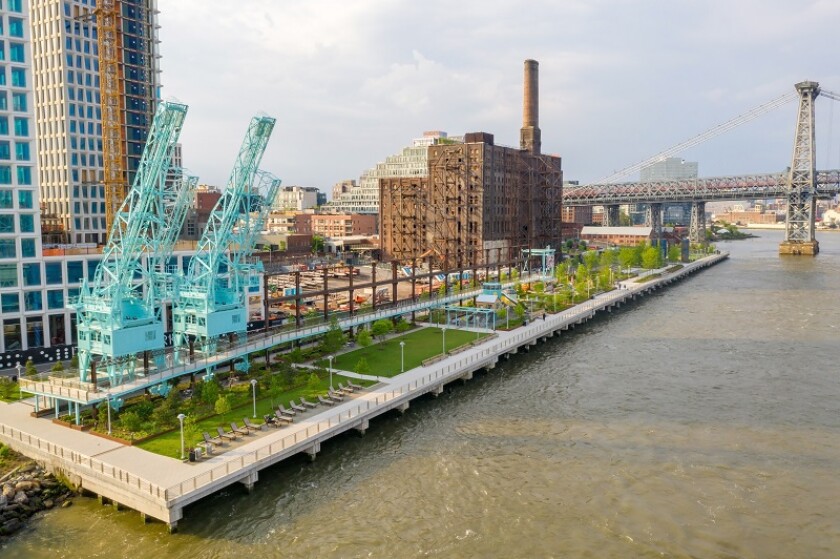Paul Epstein, Shearman & Sterling
SECTION 1: Market overview
1.1 Please provide an overview of the project finance market in your jurisdiction.
Overall 2017 has been a strong year for the US project finance market. In the infrastructure sector, despite uncertainty as to the policy direction to be taken by the Trump administration, a number of significant projects were launched (and active procurements continued) across asset classes, with an upturn in privatisations and greenfield projects in the airport sector, and a handful of significant projects reached financial close. In the energy sector, deal activity has been robust, particularly in the power sector. The year has seen significant acquisitions of operating facilities in both conventional power and renewables sectors. Deal flow has been facilitated by strong liquidity in the loan market, due principally to the combination of low interest rates and competition among financing sources, with institutional investors playing a more significant role (see further below).
1.2 What is the composition of the market in terms of the types of active lending institutions and has this been evolving?
The principal lending institutions are commercial banks, institutional investors investing in private placements of bonds under section 4(2) of the Securities Act of 1933, which do not require registration with the US Securities and Exchange Commission, and US governmental lending institutions or other government-backed sources. The specific financing structure varies by sector and asset class. These variances reflect the diversity of financing options available in the US project finance market.
For example, for greenfield transportation projects, government-backed sources are frequently the most attractive to developers, given that they offer long-term, fixed-rate instruments priced at lower rates than other options. Most projects include either or both loans from the US Department of Transportation (USDOT) under the Transportation Infrastructure Finance and Innovation Act (Tifia) and tax-exempt Private Activity Bonds (PABs), authorised by USDOT. Similar lending programs to Tifia exist in the rail sector, through USDOT's Railroad Rehabilitation and Improvement Financing (RRIF) program, and in the water sector, through the Water Infrastructure Financing and Innovation Act (Wifia) program, administered by the US Environmental Protection Agency. 2017 was the Wifia program's inaugural year and 12 projects are currently in the funding process, with the first loans expected to close in Q1 2018.
For brownfield projects, and greenfield projects where government-backed sources are unavailable, the financing is more diverse. The most notable evolution over the last few years – particularly since Allianz Global Investors' funding of a significant portion of the purchase price for the $5.7 billion acquisition of the Indiana Toll Road – has been the growth of the role of institutional investors in the transportation, water and social infrastructure sectors. These investors compete with the commercial banks, particularly on projects procured on a public-private partnership (P3) basis.
The private placement market has also evolved in the power sector (both conventional and renewable), with several significant projects having been funded by institutional investors during 2017 either as the sole source or pari passu with senior bank debt.
Recent developments driving this change include an increase in capital raising for, and allocation among funds and insurers to, infrastructure investments; institutional investors' willingness to take construction risk and make multiple disbursements during the construction period; and the limitation on the ability of commercial banks (unlike institutional investors) to lend with long tenors, due in part to Basel III capital requirements and liquidity ratios that increased the cost of project finance loans.
1.3 Please describe any major current projects or initiatives that are influencing activity.
In its proposal related to US tax legislation, the US House of Representatives contemplates eliminating PABs. Notably, the companion bill in the Senate preserves PABs, and the program is expected to survive in the final legislation, which is being finalised as this chapter goes to print. Given the Trump Administration's stated priority of shifting funding responsibility to state and local governments (and private sources tapped by such entities), however, this proposal may be expected to resurface in future discussions.
The tax bills now passed by both houses also included proposed cuts to tax credits that benefit renewable energy developers (which caused a slowdown in new renewable energy investments toward the end of the year). As this chapter goes to print, it is expected that such tax benefits will be preserved under the final bill. The US renewable energy industry has surged in recent years due to such credits, which reduce project costs, together with reductions in the cost of key equipment such as wind turbines and photovoltaic panels, which have enabled wind and solar power to compete with fossil fuel-generated power in certain jurisdictions. Any future proposals to eliminate such credits risk chilling investments in wind and solar energy projects. In addition, following a decision by the US International Trade Commission that US manufacturers of solar panels were harmed by imports from China, a key supplier to the market, the Trump Administration must decide whether to impose duties on panel imports. Such duties would drive up equipment costs and therefore risk slowing investments in solar project development.
SECTION 2: Transaction structures
2.1 Please review some recent notable transactions involving your market and outline any interesting aspects in their structures.
One of the most notable projects for 2017 was the Central 70 Project in Denver. Under this $1 billion P3 project, Colorado's High Performance Transportation Enterprise and Colorado Bridge Enterprise (the Enterprises) – which are businesses within the Colorado Department of Transportation (CDOT) – awarded a concession to a private team of developers and contractors (led by Meridiam Infrastructure and Kiewit) to design, build, finance, operate and maintain a 10-mile stretch of Interstate 70 in greater Denver, Colorado over 30 years. The concession has an availability payment structure, which has become the preferred P3 procurement model in the US market. The Enterprises will make monthly payments to the project company, subject to it satisfying the performance requirements in the concession agreement. Commercial close was achieved in November 2017. Financial close was expected by the end of 2017, with the financing sources being an approximately $420 million Tifia loan and up to $150 million of PABs.
This year, the Ohio State University (OSU), the fourth largest US public university with an enrolment of over 55,000, closed the first leased-based concession of campus energy assets. This $1.165 billion transaction was an evolutionary step forward in P3s for the market, which had not seen an energy asset P3 of similar size. This project included a $1.015 billion upfront payment by the sponsors, Engie and Axium Infrastructure. In contrast to previous monetisation concessions, where the project company is entitled to the asset's revenue stream (which secured the debt), this transaction is similar to an availability payment structure. In return for operating the assets (which consist of the university's heating, cooling and electricity systems) over 50 years, the project company will be entitled to a utility fee that includes fixed and variable components. The latter can increase to the extent additional capex is made by the project company. The upfront payment was financed with two tranches of private placement notes totalling approximately $850 million, split between the holding company and operating company levels, and sponsor equity. The sponsors also secured a capex facility in the commercial bank market.
2.2 What might the projects above mean for the market and have you noted other noteworthy developments in the way project finance transactions are being structured for a) energy projects and b) infrastructure development?
The Central 70 and OSU projects demonstrate the following trends, which we would expect to continue in 2018: (a) the prevalence of the availability payment model in US concessions (to the extent permitted by applicable state law); (b) a continuation of the key role played by private placements and government-backed financing sources in transportation P3s; and (c) increasing innovation in procurement structures across sectors.
Other transactions of note include: the first-of-its-kind procurement, on an availability payment basis, of the automatic fare collection system of Boston's transit network by the Massachusetts Bay Transportation Authority (MBTA); the privatisation of the Westchester County Airport under a lease structure, which would be the first airport privatisation in the continental US under the US Federal Aviation Administration's pilot program; and (c) the approval of St Louis' Lambert International Airport for privatisation, as part of the same program.
SECTION 3: Legislation and policy
3.1 Describe the key legislation and regulatory bodies that govern project financing in your jurisdiction.
In the infrastructure sector, USDOT is the principal regulatory body, with the Federal Highway Administration (FHWA) being responsible for highway projects, the Federal Transit Administration (FTA) being responsible for transit projects and the Federal Railroad Administration (FRA) being responsible for rail projects.
In the energy sector, the principal bodies are the Federal Energy Regulatory Commission (FERC), which regulates the interstate transmission of natural gas, oil, and electricity and the wholesale sale of electricity, and relevant state public utilities commissions.
The key legislation affecting industry participants is the Federal Power Act (FPA), which regulates, amongst other things, the rates, terms and conditions for the sale of electricity and transmission service and requires FERC approval for a variety of transactions, including mergers, consolidations and other direct and indirect changes in control of public utilities.
3.2 Have there been any recent changes to regulations or regulators that may impact the finance structuring in terms of guarantee and security regimes, local currency rules and foreign investment restrictions?
A key element of the Trump Administration's infrastructure initiative is the streamlining of regulations affecting investment in the sector, in particular environmental reviews under the National Environmental Policy Act (Nepa), which are necessary for any project receiving federal dollars. The Administration has issued executive orders and proposed rulemakings intended to harmonise regulatory regimes between agencies and eliminate unnecessary red tape.
One example that could have positive impact on infrastructure investment is the Executive Order issued in August 2017 Establishing Discipline and Accountability in the Environmental Review and Permitting Process. The Order directs agencies to streamline their environmental permitting process by requiring major infrastructure projects to be reviewed as One Federal Decision, which means that one lead agency will be responsible for coordinating the project's environmental reviews, with the goal of completing them within two years (the current average is nearly five years).
3.3 Please describe the regime governing renewable energy investment.
The renewable energy investment regime in the US is diverse, involving utility scale developments in the wind and solar sectors as well as residential developments in the solar sector. Projects are typically developed by private, independent power producers that sell power to utilities pursuant to a power purchase agreement (PPA). Tax credits have driven investments, in particular the production tax credit (PTC) for wind investments and the investment tax credit (ITC) for solar investments (we note that these credits are set to expire in 2020 and 2022, respectively). Developers typically sell the credits to tax equity investors, which are banks and other investors that apply them to offset their tax liabilities. Proceeds of the sales are applied to project costs. Approximately 66% of wind projects and 75% of solar projects in the US are supported by such tax equity financing. Although costs are falling, renewable power is still generally more expensive in the US than conventional power.
A key driver of purchases of such power is states' renewable portfolio standards, which require the utilities' mix of power to include a certain percentage from renewable sources.
3.4 Does your jurisdiction have incentive schemes in place for various types of energy or infrastructure project development?
See Questions 1.2 and 3.3.
3.5 Are there any rules, legislation or policy frameworks under discussion that may impact project finance in your jurisdiction?
See Questions 1.2 and 3.2.
SECTION 4: Market idiosyncrasies
4.1 Please describe any common mistakes or misconceptions that exist about the project finance market in your jurisdiction.
One common misconception is that doing a deal in one state is the same as any other. This misconception can manifest in a myriad of ways. In the infrastructure sector, certain investors have underestimated the complexity of the US P3 market upon learning of recent successes. Upon entering the market, these investors have encountered challenges that have led them to question some of their initial assumptions. These challenges include: (a) the fact that procurements are led by the state or locality, not the federal government, each of which has its own regulatory regime; (b) the existence of conflicting views among project managers and planners and elected officials over the appropriate structure of the procurement and the nature of the project; (c) the lack of experience of many state and local officials with P3 procurements; and (d) the complex regulations related to permitting, particularly under federal and state environmental laws.
4.2 What measures should be taken to best prepare for your market idiosyncrasies?
Investors that have been the most successful in mitigating the challenges described in Question 4.1 above are those that have: (a) sought information from existing stakeholders, including developers, contractors and government officials, regarding the relevant jurisdictions well in advance of projects coming to market; (b) partnered with existing participants in structuring statements of qualifications and bids; (c) obtained proper advice from legal and technical advisors; and (d) focused their time (and costs) on select key projects or jurisdictions and sourced comprehensive market information regarding the jurisdictions legal regime, procurement practices and key decision makers and stakeholders, including community groups.
SECTION 5: Practical considerations
5.1 How established is the legislative framework and authorities that govern public-private partnerships (PPP) and where have PPP structures most successfully been applied?
After some fits and starts over the last two decades, the P3 market in the US is, on the whole, maturing. The US can be considered a mature market with respect to brownfield assets, which attract significant investor interest, in particular from pension funds and other infrastructure funds that have been amassing capital over the last few years in anticipation of further US market opportunities.
In the greenfield space, market expansion has been constrained somewhat by the US federal system, which created a patchwork of laws between the states, and the absence of a federal (or regional) institution coordinating such procurements, as exists in other jurisdictions.
With respect to legislation, 37 out of 50 states (and Washington, DC) have passed P3 laws. Notable successes (or current procurements) have occurred in, among others, Alabama, California, Colorado, Florida, Maryland, Virginia and Washington, DC.
5.2 What are the key considerations relating to foreign investment into projects as regards insurance and tax structures?
Investors must be mindful of variations in minimum insurance requirements (and coverage availability) and tax regulations between states. The federal tax implications of foreign investment in a US project will vary based on several factors, including the identity and jurisdiction of the investor, the borrower's entity (and related tax) status, its organizational structure and the nature of the project assets. It is therefore important for investors to seek advice on these matters as part of the due diligence of a project.
5.3 Are there any specific issues creditors should be mindful of regarding a bankruptcy and restructuring scenario?
Non-US investors should be aware that the US bankruptcy regime is generally debtor-friendly compared to other jurisdictions. In particular, the automatic stay under Chapter 11 of the US Bankruptcy Code is the paramount debtor protection and is not found in other jurisdictions, such as the UK. Immediately upon commencement of a bankruptcy proceeding under Chapter 11, subject to certain exceptions, third parties automatically are prohibited from taking any action to obtain possession or control of property of the debtor's estate based upon a prepetition obligation. Accordingly, out-of-court restructurings are frequently preferred.
SECTION 6: Outlook
6.1 What are your predictions for the next 12 months in the project development and financing sector and how do you expect legal practice to respond?
We expect to see continued strong activity in both the infrastructure and energy sectors in 2018, consistent with the overall US economic outlook. In infrastructure, a number of procurements in the highway and airport sectors are expected to be awarded or otherwise significantly progressed. In early 2018, the Trump Administration is expected to present a list of guiding principles for legislative action, which, it is hoped, will assist Congress in developing new infrastructure legislation that facilitates project development at the state and local level.
In the power sector, we expect to see a mix of new-build, gas-fired facilities and renewables facilities, and acquisitions of existing assets, as investors continue to think opportunistically and take advantage low interest rate (even with three additional hikes expected in 2018) and gas prices (even factoring in a possible correction with further market tightening), as well as refinancings of existing gas-fired facilities.
About the author |
||

|
|
Paul Epstein Partner, Shearman & Sterling New York, US T: +1 212 848 5266 Paul Epstein is a partner in the project development & finance group of Shearman & Sterling. He represents corporations, funds and other financial and public and private institutions in complex financings, focusing on project and acquisition matters in the infrastructure, energy and mining sectors, both domestically and internationally. Epstein has significant experience with projects procured on a public private partnership (P3) basis. He has been identified as a P3 industry expert and has served on a distinguished panel of judges for the P3 Bulletin P3 Awards for 2014 through 2017. Epstein is also recognised as a Rising Star in project finance and banking by IFLR1000. |

